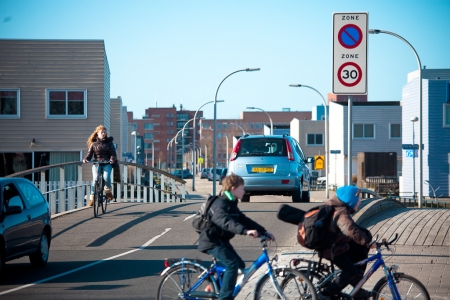Answer
At present, 50 km/h is the starting point for the standard speed on roads in urban areas. Some organizations have recently advocated making 30 km/h the norm here (e.g. the Dutch Cycling Association [18] and the Dutch Traffic Safety Association (VVN) [19]. With a solid introduction, this can result in important safety gains and improve quality of life (see also the question <What are the road safety effects of 30 km/h zones?). However, this ‘solid introduction’ has a number of conditions attached:
- The safety gains will only be achieved if the speeds driven can really be no faster than 30 km/h and this requires a good layout (see also the question What does a 30 km/h zone look like?). If the standard speed in urban areas is set at 30 km/h, the design requirements that now apply for 30 km/h zones will then apply in all urban areas.
- Ensuring a good traffic flow within a city will also require corridors where speeds of 50 or 70 km/h can be driven. Point of interest here is the size of the areas where 30 km/h is the (standard) limit. If these areas are large, the surrounding 50 or 70 km/h roads will need to process many motor vehicles per hour. This reduces the quality of life on those roads and will hamper crossing those roads by pedestrians and cyclists in particular. For cyclists and pedestrians, the 50 and 70 km/h roads must at least be constructed with separated infrastructure, i.e.: bike paths and sidewalks must be separated from the roadway.
